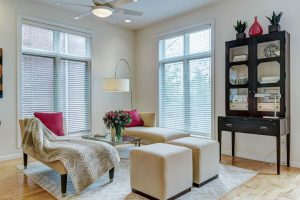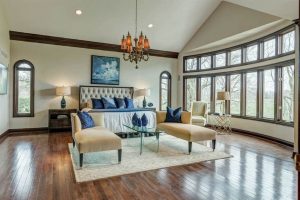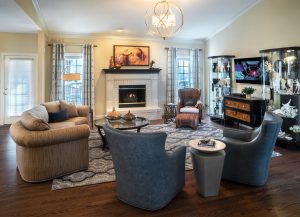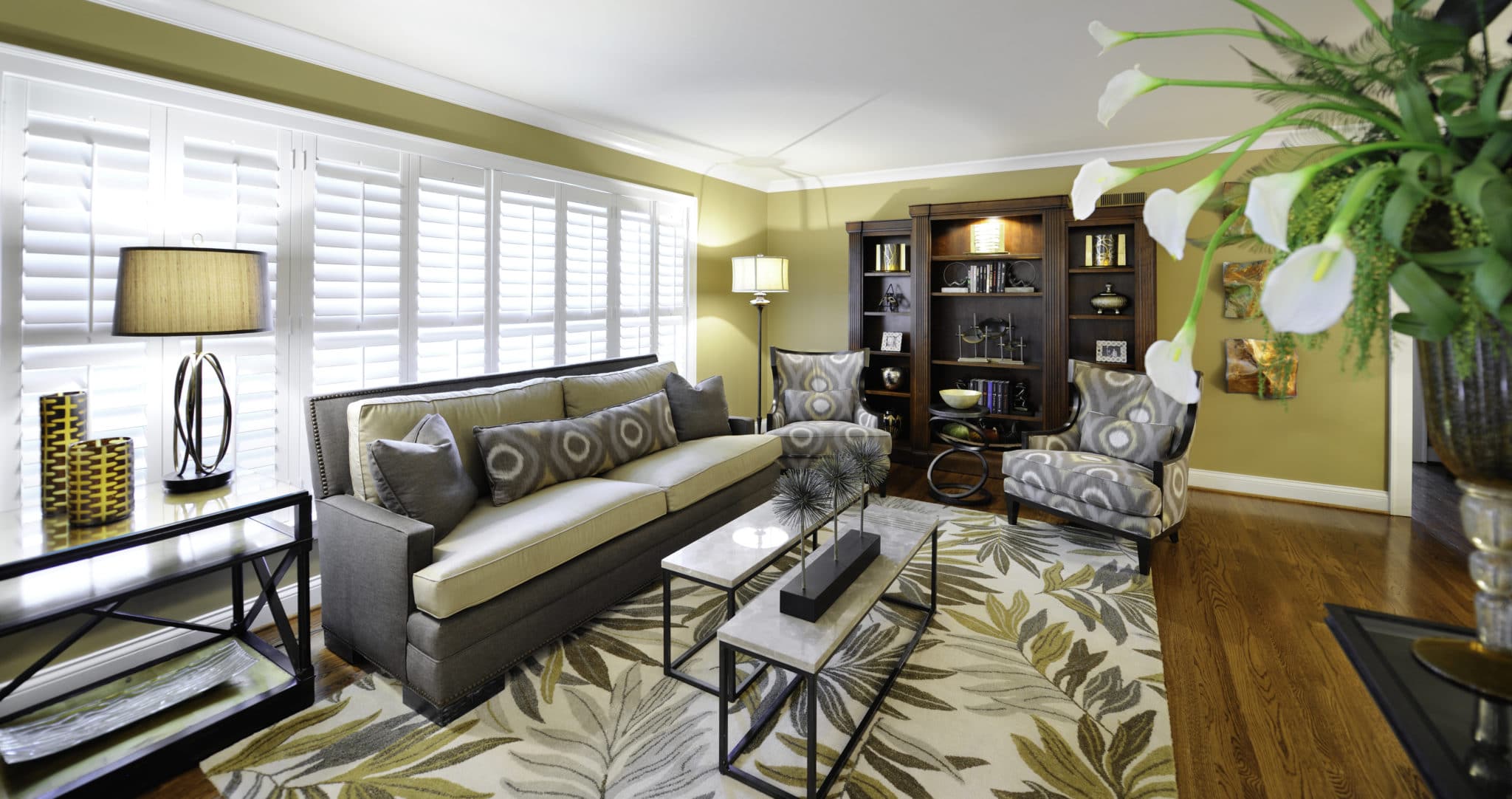What would we do without our TVs? Well, we’d probably talk a lot more — to our spouse and children, to our friends, and to other visitors. Real, thoughtful, engaging conversation. Imagine that!
Casual conversation is a wonderful way to enjoy our idle time, and that’s why I’m so excited about the latest design trend that I’ve seen popping up on industry blogs and newsletters.

I’m talking about conversation areas.
I say “latest” instead of “new”, because this is an idea that actually has been around for quite awhile — from back when we, as a society, didn’t have TVs to occupy our attention!
That’s right, we’ve come full circle. And, in my opinion, this is a very good thing.
Encourage Conversation
So what exactly is a conversation area?
It’s exactly what it sounds like. It’s a space where the room design and furniture arrangement fully support and encourage gabbing and gossiping and other forms of chit chat.
In these setups, the TV is often hidden or completely absent from the room. Your seating spots face each other, and often help highlight some other focal point in the room. The furniture arrangement is often in the very center of the room.
This is a design move that immediately makes a bold statement about what is important in your home: the people inside, and the connections between them. And it’s something that can be done no matter what style home you have, or how big or small it is.

I’ve seen conversation areas in family rooms, living rooms, offices and even bedrooms. All it takes is the right mindset and a little creativity. Here’s a quick video with a good overview of this topic.
Is this something that appeals to you? If so, read on for five tips on how to make the perfect conversation area in your home.
Variety is Twice as Nice
There are no hard and fast rules when it comes to seating choices for your conversation area. As you can see in some of the pictures I’ve assembled here, conversation areas can be made in a variety of ways.
You could take two couches or loveseats and face them toward each other in the center of the room. Or you could opt for armchairs, and place them in a square or circular pattern. Stools and ottomans can double as places to rest your seat, or your feet, OR your drink.
The idea here is to encourage movement and interaction and comfort. You want people to feel equally at home enjoying cocktails together or reading next to each other — yes, enjoying another person’s company in silence can also be a form of conversation!

Spacing and Other Dimensions
The golden rule here is to keep everything at talking distance.
Generally, you’d want to avoid spacing seats any further than what can allow for easy, low-volume conversation — so a maximum of 7 to 9 feet apart, although I’d urge you try to keep seats closer than that.
You really only want to reach for the maximum if you are envisioning larger groups of people co-mingling. When we’re talking about smaller groups, and day to day use, I’d stick closer to about 3 feet apart.
And as I mentioned earlier, you can be creative in your seating choices. Traditional armchairs or sofas offer a more conventional and streamlined look, but don’t be afraid to experiment with poufs and stools and other versatile seating. Just be sure to follow the same spacing rule.
Additionally, try to keep everything at the same height. Guests may feel uncomfortable talking to someone who isn’t at eye level with them.
If you are using a coffee table or ottoman, plan on it being about 18 inches from surrounding seats. This ensures everyone can reach it. Of course, if you are in a smaller space and people may be walking between the pieces of furniture, follow the 3 feet rule.

Finally — and we alluded to this earlier — you want to avoid having any of your furniture pressed up against a wall. The conversation is the centerpiece so it should be in the center of the room. That’s an easy one to remember.
Focal Points and Anchors
Make sure you give people something to talk about.
Maybe it’s a beautiful painting, positioned in a place where all seats offer a view of it, or perhaps it’s a unique sculptural piece or stack of interesting books that sit on the coffee table. This not only becomes a conversation starter, but it also helps the eye travel to the important parts of the room.
Sometimes, the original elements of the room can also serve as focal points — a picture window, for instance, or a fireplace. Use your imagination. What would you enjoy staring at during even the most boring of conversations?
Now, because our conversation areas are “floating”, so to speak, we’ll also want to anchor the furniture with a well-placed (and perhaps eye-catching) area rug. The rug doesn’t need to be huge, but it should help define the space.
There are plenty of articles out there on choosing the right size rug for your space. But a simple rule of thumb is to find something big enough so each piece of furniture can have at least one leg on it.

Put a Glass on it
Assume that every person who sits will have a glass in their hand. This is a safe bet, whether it is a coffee cup in the morning or a glass of wine at night. You don’t want anyone trying to balance drinkware on their lap.
And again, be creative. Look for nesting tables, console tables, coffee tables, stools and more. Versatility is key here, so that you can avoid crowding the space.
Lighting
It’s important to establish good lighting in this space. Nobody likes talking in the dark.
If you have a spot with a bay window or skylight that brings in a ton of natural light, that’s a perfect place to set up your conversation area. Bonus points if those windows peer out to a beautiful landscape or water feature.
But if you don’t, no need to fret. You can recreate this cheery mood with the right placement of can lights and sconces or floor and table lamps.
You’ll just want to avoid anything that is too bright or harsh, or on the other end of the spectrum, too dim and dreary. Dimmers are a nice touch, because you can adjust the lighting as the day goes on.
And consider using pairs with your lamps or other lighting, to establish balance and cohesion.

Keep in Touch!
Hopefully, I’ve given you a lot to talk about (pun intended) with this blog post.
Remember, I’m always happy to receive your comments and questions. I’d love to help you set up a conversation area in your home!

